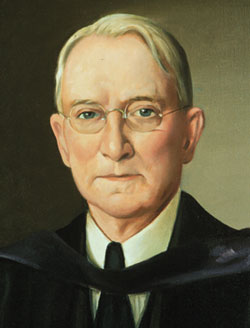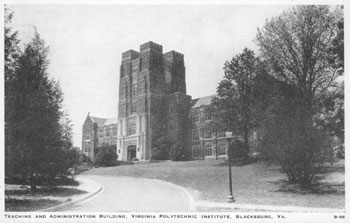 |
|
|
The carillon was installed in 1958. Major changes came in 1968, when the west wing and rear addition were constructed, and in 1970, when the east wing was added. Although the building eventually housed only administrative and service offices, it returned to its original teaching and administrative functions in the late 1980s. A man of achievement When he was unanimously elected to the presidency in 1919, Burruss was serving as the first president of the Normal and Industrial School for Women (now James Madison University). He was Virginia Tech's first alumnus president and the first with experience and professional study in school administration, curriculum, and school finance.
But those accomplishments pale in comparison to two other changes Burruss initiated. In 1921, he persuaded the board of visitors to admit women as regular students, and two years later he modified the mandatory four-year military requirement to two years. These unprecedented actions moved the school away from its military college roots and set the stage for a larger civilian student body. Late in his presidency, Burruss sustained injuries in an automobile accident and could not resume his duties. The board of visitors elected him president emeritus and named his successor. Burruss died on Jan. 4, 1947. Remaining true to history Burruss Hall will maintain its historic teaching and administrative functions, at least for the foreseeable future. According to Kurt Krause, vice president for business affairs, the building construction department will move to temporary facilities before the start of fall semester 2006 and ultimately to new facilities in late fall 2007. The interior design department will also temporarily relocate so that complete renovations in the back wing of Burruss Hall can begin in fall 2006. Once completed, faculty and staff offices of the landscape architecture department will move into the first-floor area and interior design will return to the second floor. Through it all, the building that bears his name will remain a monument to the vision and achievement of Julian A. Burruss. |

